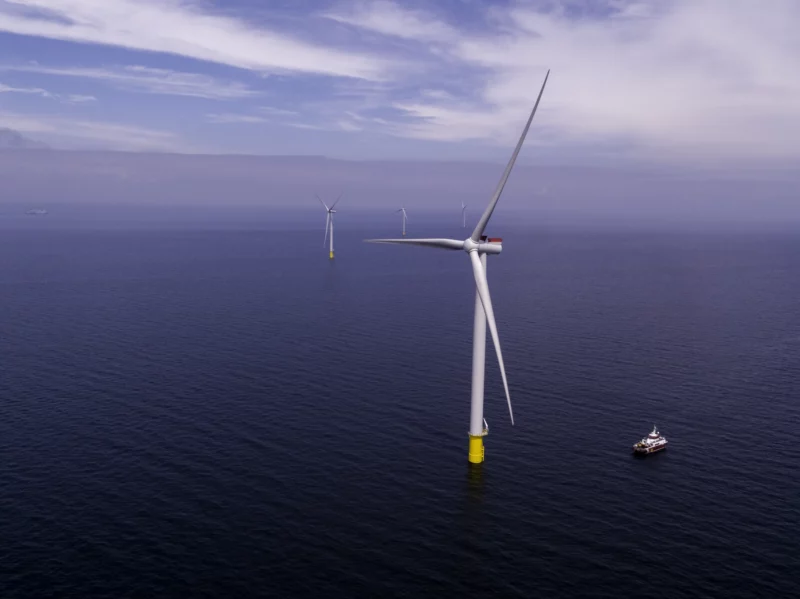Solution provider
Energinet is an independent public enterprise owned by the Danish Ministry of Climate, Energy and Utilities. We own, operate and develop the transmission systems for electricity and natural gas in Denmark.
Case
Offshore wind
Smart energy systems
Wind energy

Energinet is an independent public enterprise owned by the Danish Ministry of Climate, Energy and Utilities. We own, operate and develop the transmission systems for electricity and natural gas in Denmark.
Add the case to your visit request and let us know that you are interested in visiting Denmark
Maintaining the trifecta of a high security of supply, affordable energy prices and a stable, uninterrupted supply of power that is generated from renewable sources is essential to securing social and political support for the decarbonisation journey our energy systems must undergo. Successfully attaining these elements requires new infrastructure and new ways of generating and transmitting energy – including across borders. But what does this look like in practice? And how do we manage the transmission of energy across borders, with differing regulations and differing technical requirements?
Denmark is known for pioneering offshore wind power, having erected the world’s first offshore wind farm in 1991. The Danes have refined the technology over the past 30 years, and offshore wind farms are a key plank of the country’s plan to ensure its electricity generation is fossil-free by 2030. Now the country is breaking new ground with plans to generate green energy that not only supplies the Danish electricity grid, but also its neighbours’ grids. Achieving this goal will not only assist in decarbonising Europe’s energy, but also in integrating European energy markets.
The offshore wind farm Kriegers Flak is an important milestone in this regard. The origins of this wind farm, which derives its name from the Danish word ‘flak’, which means reef, and the Danish naval officer, Christian Krieger, who mapped the Baltic Sea in 1840, date back to Denmark’s 2012 energy agreement. Located between 15 – 40 km off the Danish coast in the Baltic Sea, Kriegers Flak will increase Denmark’s wind production by 16 per cent. Consisting of 72 Siemens Gamesa wind turbines, the wind farm became fully operational at the end of 2021. With an installed capacity of 605 MW, Kriegers Flak is currently Denmark’s largest offshore wind farm, eclipsing the record previously held by the 407 MW Horns Rev 3 farm.
However, what makes Kriegers Flak revolutionary is its inclusion in the Kriegers Flak Combined Grid Solution (CGS). Devised and developed jointly by the Danish and Germany transmission system operators since 2016, the Kriegers Flak CGS cross links the national grids of Germany and Denmark.
Specifically, Kriegers Flak CGS connects the Danish region of Zealand with the German state of Mecklenburg-Western Pomerania via two German Baltic offshore wind farms, Baltic 1 and Baltic 2, and the Danish Kriegers Flak offshore wind farm. By utilising existing and newly built grid connections from the offshore wind farms, the CGS will allow for energy to be exchanged between the two countries. The wind farms are situated within 30 kilometres of each other, and the offshore interconnector is situated on one of Kriegers Flak’s offshore platforms that has been extended.
The interconnector is created via two submarine cables with a transmission capacity of 400 MW that connects the farms, and, by extension, the Danish and German grids. In situations where there is a lack of wind in the Baltic Sea, the platform and the submarine cables are utilised to interconnect the exchange of electricity between the two countries. A master control system that is located at the Transmission Control Centre in Berlin functions as the brain of the solution, controlling the exchange of electricity between the two countries, as well as helping to smooth the influx of wind power into the grid and prevent overload. This ensures efficient utilisation of the cables and the CGS’ infrastructure, thereby lowering electricity prices for consumers.
Given that Denmark and Germany are two different synchronous transmission areas, two voltage source converters convert the alternating current from the Nordic area into direct current and back again. A back-to-back converter has been installed at the transformer substation in Bentwisch, which is close to Rostock in Germany, to do so, thereby allowing for the uninterrupted flow of energy between the two countries. An offshore transformer has been erected on an offshore platform close to the Kriegers Flak facility to manage the different voltage levels of the German and Danish wind farms.
With construction commencing at the end of 2016, Kriegers Flak was officially inaugurated in October 2020. Power transmission between the two countries commenced on December 15, 2020.
The Kriegers Flak Combined Grid Solution marks a new chapter in offshore wind. Capable of supplying green power to 600,000 households, it is the first project where an offshore power grid connects wind farms located in two different countries. Co-financed by the European Union, the CGS contributes to the EU’s goal of a single electricity market and assists in decarbonising Denmark and Germany’s energy supply. The design of the CGS also strengthens the integration of additional renewable energy into the two countries’ electricity grids, thereby increasing security of supply for both countries. The interconnector between the two countries also means that the cheapest form of generation will used to meet electricity demand.
Furthermore, Kriegers Flak is seen as the precursor to Denmark’s cutting-edge energy islands project, where the country plans to construct islands that will serve as hubs that gather electricity from the surrounding offshore wind farms and distribute it to the electricity grid in Denmark as well as directly to other countries, giving households and businesses access to this green electricity.
The Kriegers Flak CGS, where offshore wind power is transported and cross-border traded electricity is transmitted in a combined technical facility, helps pave the way for the upcoming energy islands. Additionally, learnings from Kriegers Flak can help inform the design and organisation of the islands.
Photo credit header image: Vattenfall